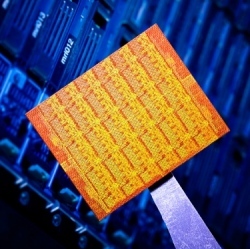
A graphene research initiative has been selected by the European Commission as one of two winners of its Future and Emerging Technologies (FET) multi-billion euro research excellence award competition. Each project will receive €1 billion to fund 10 years of research “at the crossroads of science and technology” — the biggest research grant ever awarded by the Commission. The second winner of the FET award is a project that aims to develop a model of the human brain.
The Graphene project will “investigate and exploit the unique properties of a revolutionary carbon-based material” — exploring the physical and chemical properties of a material that is just one atom thick; conducts electricity much better than copper; is 100 to 300 times stronger than steel; and has “unique optical properties”.
Researchers have already been looking at how graphene could improve battery capacity and exploring its water-repelling properties. But the EC is betting on graphene becoming “the wonder material of the 21st Century” — replacing silicon in ICT products and becoming as important as plastics were to the 20th Century:
Graphene: this material looks to become as important as steel or plastics in the long-term. Research on graphene is an example of an emerging translational nanotechnology where discoveries in academic laboratories are rapidly transferred to applications and commercial products. Graphene and related materials have the potential to make a profound impact in ICT in the short and long term: integrating graphene components with silicon-based electronics, and gradually replacing silicon or enabling completely new applications. Beyond ICT, graphene research will significantly impact energy and transport, and also health.
The Graphene FET flagship project will be led by Professor Jari Kinaret, from Sweden’s Chalmers University, and will involve more than 100 research groups, with 136 principal investigators, including four Nobel laureates.
